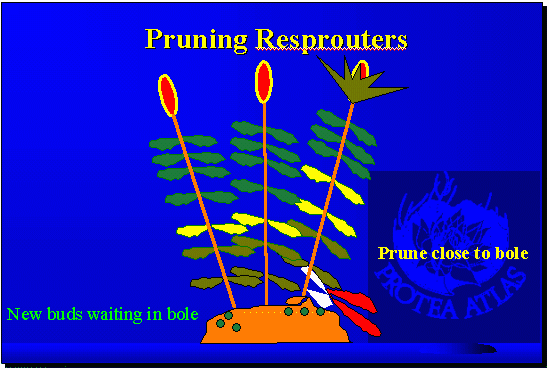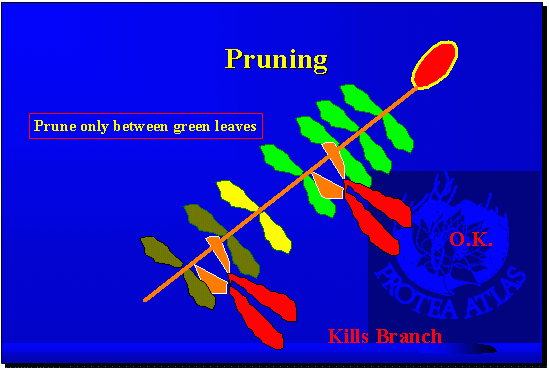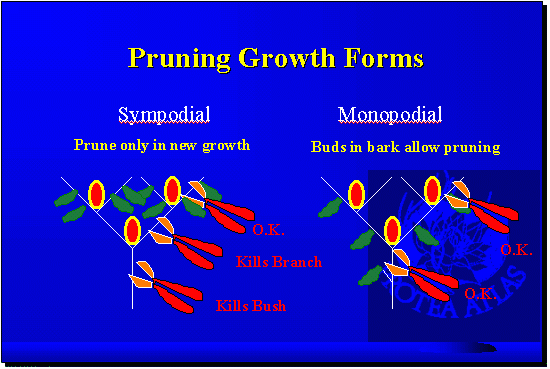
Home
Mission
Overview of Project
Project Staff
Sponsors
Achievements
Checking, Illustrations
Upcoming Activities
Id and Species Lists
Protea Information
Protea Gallery
Growing Proteas
Interim Dist. Maps
Publications
Afrikaanse Inligting
![]()
Gardening Tips and Resprouting
| If you have a resprouter in your garden, it will benefit from the fiery approach: a harsh pruning every four to six years in which every single branch is cut back to ground level. Remember to apply a suitable sealant whenever you prune your plants. You will be rewarded with a spurt of new growth and many more blossoms. A worthwhile practice is to remove blossoms [if required for the vase, etc.] by cutting the stem right down to adjacent to the rootstock: You will be rewarded with more stems and blossoms the next year. If you prefer the blossoms to remain in your garden, you may prune off the flowering branch at the base once flowering has been completed, or leave it till the next "harsh" pruning. However, in most lignotuberous species, once a blossom has been produced the branch ceases growing, so it might as well be removed. |  |

If you wish to grow resprouters from seed, then expect at least six to eight years before the plant is big enough to flower. During the first few years it will shunt its resources into the rootstock and remain a runt. It is best not to prune the young plant until you notice some buds on the rootstock or until it has flowered once. Even resprouting trees, like
Wagon Tree - Protea nitida, may take five to eight years to develop the rootstock before spurting to a one metre multistemmed shrub and flowering at about 12 years. Thereafter, the removal of all but one of the stems will encourage a tree form, or periodic removal of all stems will encourage a multistemmed form.
By contrast, plants which cannot resprout should never be pruned below the existing leaves: there are no subcortical buds and the stem will merely die. If you wish to take blossoms for the vase then the trick with this species is to train them as young plants.

Judicious, regular pinching out of the terminal buds will result in a busy shrub, even in the species which are typically tall and lanky. Such trained plants are able to tolerate extensive pruning. This approach is especially valuable with species such as Blushing Bride - Serruria florida and Marsh Rose - Orothamnus zeyheri, which are otherwise very spindly and short-lived. Pruning also rejuvenates bushes allowing them to live to a far riper age. Another advantage is that since there are more branches you will obtain more blossoms. Remember, though, never to prune below the level of the healthy leaves: old, lower leaves - once they start going paler - have subcortical buds with reduced viability!

Have a look at What is Resprouting?
Back Growing Proteas